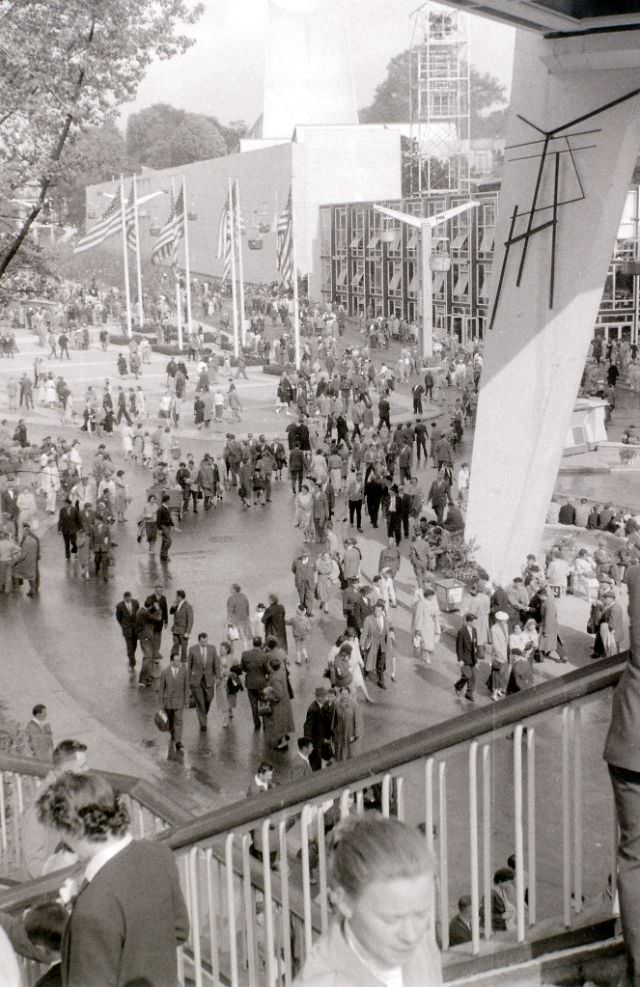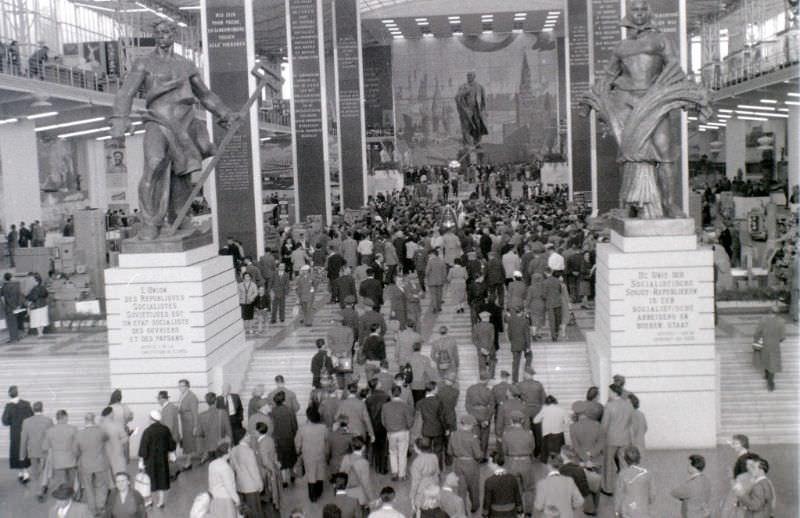Expo 58, also known as the 1958 Brussels World’s Fair, was a major international exhibition that took place in Brussels, Belgium, from April 17 to October 19, 1958. The event celebrated the post-World War II economic boom and was held at the height of the Cold War, during a time of intense competition between the Western powers and the Soviet Union. It attracted over 41 million visitors from around the world and was considered one of the largest and most successful World’s Fairs of the 20th century.
The fair’s theme was “A World on the Move,” reflecting the growing technological advancements and innovations of the time. It showcased the latest advancements in transportation, communications, and energy, as well as new scientific and cultural achievements. A highlight of the fair was the Atomium, a giant model of an iron crystal magnified 165 billion times, which served as the event’s symbol and became one of the most iconic structures of the modern era.
The fair featured pavilions from 58 countries, including the United States, the Soviet Union, and many European nations. Each pavilion was designed to showcase each country’s unique cultural, technological, and industrial achievements. Many pavilions were designed by well-known architects and artists, including Le Corbusier and Jean Prouvé, and featured groundbreaking designs and technological innovations.
One of the most impressive pavilions at the fair was the American Pavilion, designed by Wallace Harrison. The pavilion was a towering structure made up of steel and glass and was intended to symbolize the power and prosperity of the United States. It showcased America’s technological innovations, including an early version of a computer and a large-scale model of the Polaris missile system. The Soviet pavilion, on the other hand, was designed to showcase the achievements of communism and the Soviet way of life. It featured a large statue of Lenin and a replica of the Sputnik satellite, among other things.
In addition to the pavilions, the fair also featured various cultural and entertainment events, such as concerts, plays, and movies. One of the most popular attractions was the Tivoli, a large amusement park that featured rides, games, and other attractions. The park was designed to evoke the magic of Tivoli Gardens in Copenhagen and became one of the most popular destinations at the fair.
Expo 58 was considered a significant success in terms of its cultural and economic impact. It helped showcase the participating nations’ technological and cultural achievements and cemented Brussels’s status as a major international city. The event also helped to strengthen the bonds between the participating countries, as visitors from around the world gathered in the city to enjoy the festivities.
































